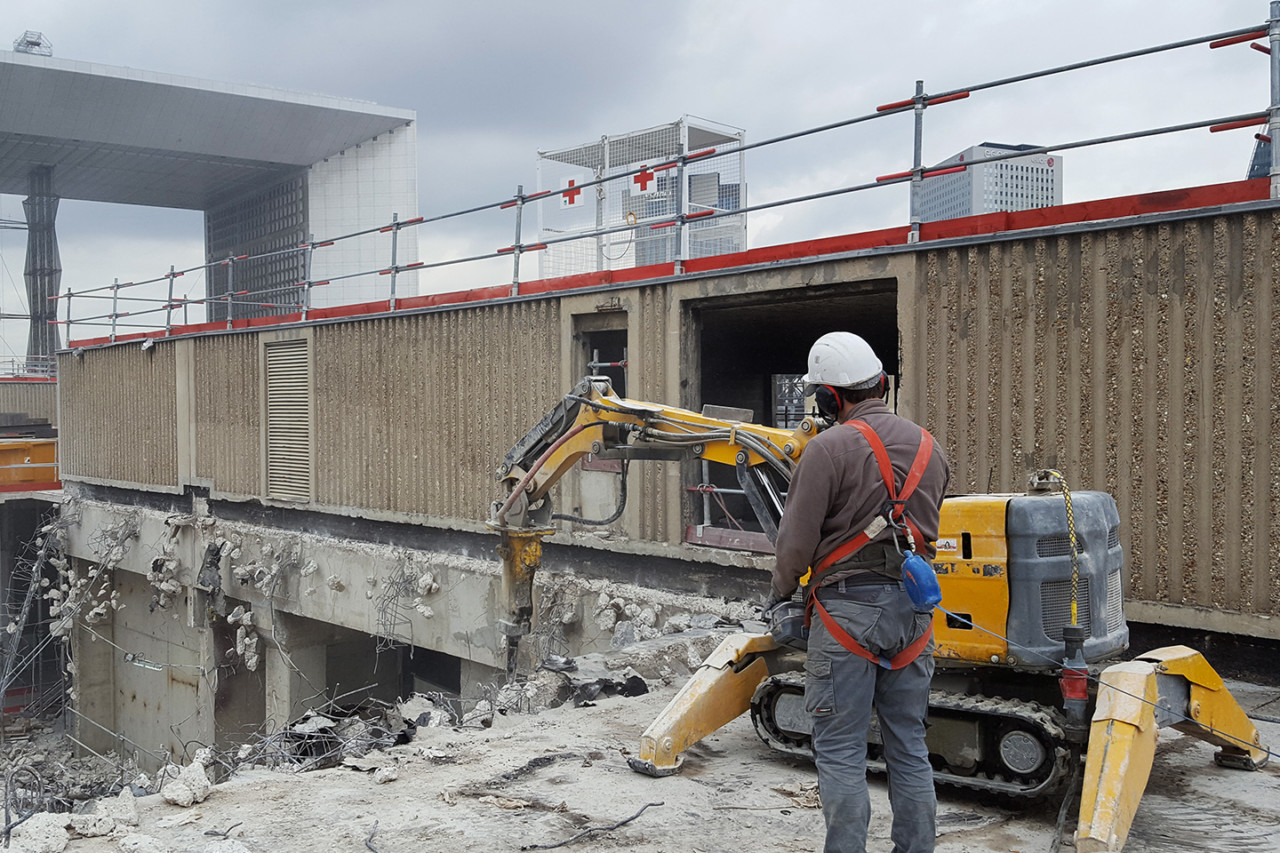Top 5 Training Tips for Brokk Operators

16 November 2019 News articles
When it comes to safe, efficient Brokk operation, training isn’t just one-and-done. It is an ongoing process. Brokk provides initial onsite training with each machine purchase and supplemental troubleshooting via phone, email or in-person depending on the situation. Every project presents unique risk factors for crews, operators and Brokk machines. Ensuring safety means constantly evaluating possible hazards and adjusting operation to avoid problems before they happen. This kind of awareness isn’t something you learn overnight, so it is important to regularly review training and proper operating procedures — whether you are new to Brokk or have years of experience under your remote-control.
To help you brush up on the basics — or test your training knowledge — we have compiled a list of our top 5 training tips.
1. Keep Your Eyes Open
Be sure you have a clear view of the machine, the power supply and cables and the work area at all times during operation. You can’t keep track of everyone on the jobsite, but you can be responsible for keeping everyone safely out of the risk zone while the Brokk machine is in operation. On jobsites crowded with traffic or visual obstacles, it can be difficult for one person to keep track of the risk zone. You don’t have to do it alone. Designate a spotter to help.
2. Stay at Arm’s Length
The size of the risk zone is based on many factors — such as the work object, work method, surface, position of the arm, angle of machine and operator — and is constantly in flux. Maintain a safe jobsite by keeping everyone outside the robot’s arm’s length while in operation. If you need to enter the risk zone, be sure the machine is in emergency stop mode or de-energized and cannot be moved accidentally. And always ensure the machine is off when not in use.
3. Inspect Each Day
Brokk machines are manufactured to take a beating, but that doesn’t mean you should forego daily maintenance and inspections. Even slight damage can lead to increased safety risks. Before operation, visually inspect the machine — paying close attention to fluid levels and hoses — and make sure everything is properly lubricated. Always check that the power cable and connector are undamaged before plugging in, as well. For more information on daily maintenance for your machine, consult your Brokk manual.
4. Watch for Overhead Dangers
When working or maneuvering in certain conditions, there is an increased risk of falling objects or tipping the machine. To avoid these, be sure that everyone is outside the risk zone; the outriggers are fully deployed, and the machine is level; and no one is beneath the work object or a raised arm, even if the machine is off.
5. Protect Yourself
It’s no secret, personal protection equipment (PPE) should be worn at all times. The exact PPE, however, might vary based on the job at hand, and might include:
- Safety harnesses and stands when working at height
- Breathing masks, gas masks or airstream helmets for sites with harmful air
- Heat shields and appropriate protective clothing for hot environments
- Barriers to define risk zone
- Safety equipment to secure machine components during repair and service
When it comes to safe, efficient Brokk operation, these tips are the bare minimum. Ongoing training, frequently reviewing safety protocols and keeping your eyes and ears open on the jobsite are the best ways to prevent problems.
Next to a certified Brokk trainer, your Brokk manual is the best resource for quick safety and operation questions. We recommend all operators and owners review this document frequently. If you need additional copies to share with your team or would like an updated version, contact a Brokk team member today.
Stay updated!
Thank You!
Thanks for your message. We’ll answer as soon as possible!
// The Brokk team
